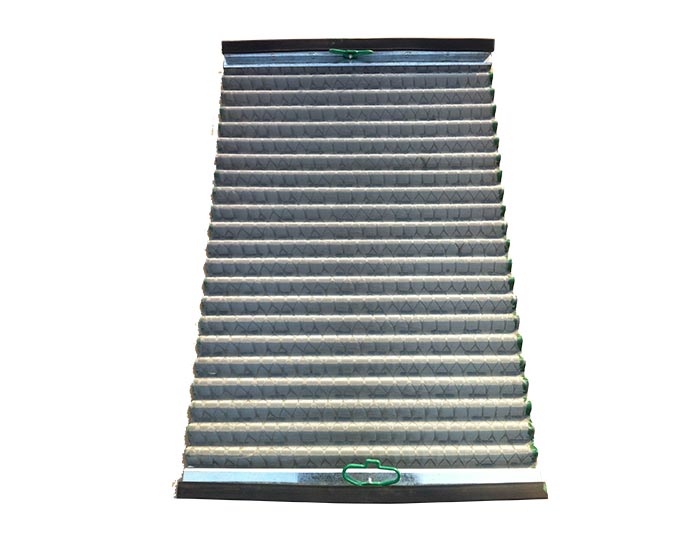Understanding Vertical Degassers A Key Component in Fluid Processing
In many industrial applications, particularly in the oil and gas, chemical, and water treatment sectors, managing the presence of dissolved gases in fluids is crucial for operational efficiency and product quality. One effective solution to this challenge is the use of vertical degassers. These specialized devices play a pivotal role in the separation and removal of unwanted gases, ensuring that process fluids meet stringent performance standards.
What is a Vertical Degasser?
A vertical degasser is a type of separation equipment designed to remove dissolved gases from liquids. Unlike conventional horizontal degassers, which may introduce complexity in design and operation, vertical degassers utilize gravity-driven processes to facilitate gas removal. The vertical orientation allows for a more efficient separation of gas bubbles from liquid, reducing the amount of energy required for processing.
Working Principle
The primary function of a vertical degasser is to manipulate pressure and flow dynamics to encourage the liberation of gases. When a liquid containing dissolved gases enters the degassing chamber, it experiences a reduction in pressure. This pressure drop lowers the solubility of the gases, causing them to coalesce into larger bubbles. As these bubbles rise through the liquid column, they encounter a series of baffles or other structured elements designed to maximize surface area and contact time, further promoting bubble growth.
Eventually, the liberated gas bubbles detach from the liquid and rise to the top of the chamber. From there, they can be vented off, while the degassed liquid is directed towards downstream processes. Because of the vertical design, the gravitational forces aid in the separation, which can lead to lower operational costs and increased efficiency compared to other designs.
Applications
Vertical degassers are widely used in various industries, each with unique requirements and challenges
1. Oil and Gas Industry In oil extraction and refining, dissolved gases such as methane and hydrogen sulfide can create safety hazards and interfere with refining processes. Vertical degassers help to remove these gases to ensure safer operations and improve product quality.
vertical degasser
2. Water Treatment Municipal and industrial water treatment facilities employ vertical degassers to remove harmful gases, especially where chlorine or other disinfection processes are involved. Removing these gases prevents issues such as corrosion and material degradation in piping systems.
3. Chemical Production In chemical manufacturing, the presence of dissolved gases can affect reaction kinetics and product yields. Vertical degassers ensure that gas concentrations remain low, facilitating smoother production processes and reducing the risk of foam formation.
4. Food and Beverage Industry In beverage production, particularly carbonated drinks, the removal of unwanted gases is crucial for product quality. Vertical degassers can help in adjusting gas levels to meet exacting specifications, thereby enhancing consumer satisfaction.
Advantages of Vertical Degassers
The design and functionality of vertical degassers confer several notable advantages
- Efficiency The vertical orientation and gravity-assisted separation generally require less energy than traditional methods, resulting in reduced operating costs.
- Compact Design Vertical configurations often take up less horizontal space than their horizontal counterparts, making them suitable for facilities with limited footprints.
- Scalability Vertical degassers can be easily scaled up or down based on process requirements, providing flexibility in operations.
- Improved Safety By effectively removing gas components that may pose risks, vertical degassers help maintain safer operational environments.
Conclusion
Vertical degassers are indispensable components of fluid processing systems in various industries. Their efficiency, compact design, and capability to enhance safety make them an attractive option for businesses looking to improve the quality of their products and streamline operations. As industries continue to strive for optimization and sustainability, the role of technologies such as vertical degassers will become even more significant, paving the way for innovations in fluid management and processing efficiency.
 Linear Motion Shale Shaker In Drilling Rig
Linear Motion Shale Shaker In Drilling Rig  Oilfield Mud Cleaner
Oilfield Mud Cleaner  Drilling Fluid Decanter Centrifuge
Drilling Fluid Decanter Centrifuge  Drilling Mud Desander
Drilling Mud Desander  Hydrocyclone Desilter
Hydrocyclone Desilter  Centrifugal Pump/Centrifugal Mud Pump
Centrifugal Pump/Centrifugal Mud Pump  Shear Pump
Shear Pump  Jet Mud Mixer
Jet Mud Mixer  Horizontal Mud Agitator
Horizontal Mud Agitator  Constant Pressure Drilling Fluid Mud Gas Separator
Constant Pressure Drilling Fluid Mud Gas Separator  Mud Gun
Mud Gun  Mud Tank
Mud Tank  Solids Control System Vacuum Degasser
Solids Control System Vacuum Degasser  Flare Ignition Device
Flare Ignition Device  Diesel Tank
Diesel Tank  Submersible Slurry Pump
Submersible Slurry Pump 






































